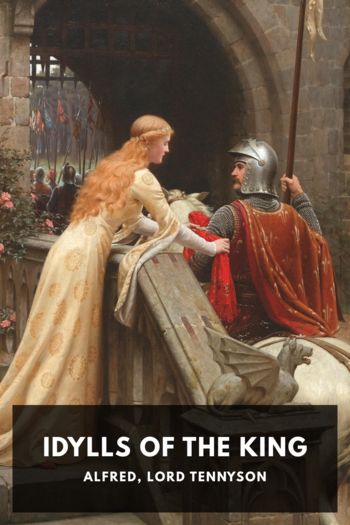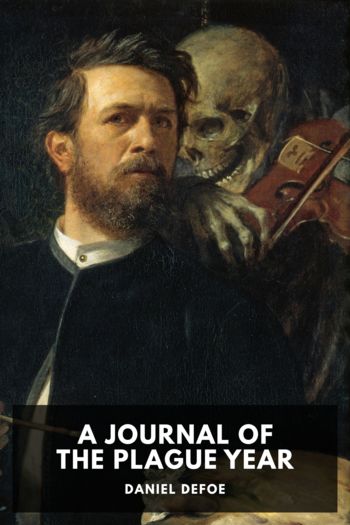Selkirk's Island, Diana Souhami [the best books to read TXT] 📗

- Author: Diana Souhami
Book online «Selkirk's Island, Diana Souhami [the best books to read TXT] 📗». Author Diana Souhami
Boats sent to the mainland three miles away stockpiled supplies of rum. Graves were dug for the dead. Captain Pickering ‘departed this Life’. More than the cursory heaving overboard, his funeral was a ceremony of prayers, homage, cannon fire and burial by a waterfall. Dampier confirmed Thomas Stradling as Captain of the Cinque Ports in his place.
Pickering’s death was a serious loss. The men had thought him fair. Dampier quarrelled with his new First Lieutenant, James Barnaby. A late night drinking session ended with Barnaby requesting ‘Leave to take his Chest and Cloaths out of the Ship’. He said he would rather live among the Portuguese than continue with this voyage. Dampier told him to take his things and go where he pleased.
Barnaby then tried to go ashore. Dampier restrained him, tied his hands behind his back and left him slumped on deck all day. Toward evening one of the crew cut him free
and about ten at Night, Barnaby and eight more of our men put their Chests and Cloaths in the Pinnace, and desir’d some of the Ship’s Company to go in the Boat with them; which accordingly they did, Cap. Dampier being in his Cabbin quite drunk.†
This was mutiny. Twelve men had left the St George and taken its pinnace. Dampier suspected that they planned to capture a Portuguese bark near the shore then work as pirates. To foil them he sent letters to the Governor of Rio de Janeiro, ‘to acquaint him with the Knavish Part of their Intent’. The men were not seen again.
Selkirk described their going as a ‘great weakening to the Ship & Damage to the voiage…’ Dampier, he said, ‘should not have suffered the said Men to go on Shoar’. After Pickering’s death and this mutiny, Dampier, Morgan and Stradling became more secretive and self-seeking. They arranged everything between themselves ‘without the knowledge of any of the said Ships Company’.†
The more the men were excluded from decision making, the more mutinous they became. They wanted strategy and a common purpose. They had been at sea five months: no gold had come their way, they had taken no prizes and their ships were in disrepair. The captain was drunk and wild-tempered and the point of the voyage seemed lost.
1704 Alone with the Ship’s Monkey
THE TWO SHIPS headed south toward Cape Horn. Dampier ruled they should not stop again until they reached The Island. Each day the men became more desperate for comfort. Their dried meat and grain were infested with ants, cockroaches and rats’ droppings.
The belongings of those who died of scurvy or fever were vied for in wrangling auctions: a sea chest, bought in London for five shillings, went for three pounds. Shoes, bought for four shillings and sixpence, went for thirty-one shillings. Half a pound of thread that had cost two shillings was sold for seventeen and sixpence.
As they neared Cape Horn the sky turned black. They reefed and furled their sails and waited for the storm. On the night of 4 January 1704 the wind hit so hard it raised the waves to the height of mountains. Rain poured down ‘as through a Sieve’. Sheet lightning hit the sea and lit the breaking waves like fire. The ships went where the storm took them. The sea broke over the decks, smashed rails, masts and yards, soaked the men and loosened the anchors. There were no lantern lights or fires for warmth or food. The sick shivered in wet hammocks in the lower decks. A boy aloft lost his hold and drowned in the night. The men crawled the decks, prayed and expected shipwreck.
Only when a corposant, a ball of light, an electrical discharge, appeared on the shattered masthead would they dare to believe that the storm had passed. When grey dawn came the sea was calm. But the ships had lost sight of each other. Dampier supposed they would reunite at The Island. On the Cinque Ports Selkirk calculated that he was west of Cape Horn. He turned the ship north into the Great South Sea and headed up the coast of Chile, toward Juan Fernandez.
But Dampier was lost. For three days he headed north to the east of the Horn. He realised his mistake only when ‘contrary to all expectations’ he came to islands east of Tierra del Fuego – the Land of Fire. He much resented Funnell’s criticism of his navigation skills, the suggestion that he was less than the supreme pilot of these seas. His men braved the Horn again.
The Cinque Ports reached Juan Fernandez on 4 February. Its crew of ninety was reduced to forty-two. They were in tattered clothes and they were hungry and sick. They turned on Stradling and accused him of inept command, unfairness and deceit. Selkirk fuelled dissent. He disliked Stradling’s upper-class highhandedness. He said that after Pickering’s death Stradling had held no consultation with the men and that Articles of Agreement were ignored.†
Stradling lost all command. The Cinque Ports anchored a mile from the shore, on the eastern side of the Great Bay, in forty-five fathoms of water.* The men took the boats to the shore, their sights set on the clear water streams, the goats in the mountains, the crabs and lobsters that scuttled the rocks. ‘For two Days the Ship lay as it were without Men’. Stradling stayed marooned on board, alone with the ship’s monkey.
Dampier saw The Island but sailed on past. ‘Our Captain thought it not to be the right Island’ Funnell wrote with scorn. No two charts gave the same latitude. Dampier thought it was at ‘33:30 South forty-five Leagues west from the coast of Chili’. Its true latitude is 340 47’S.* After several days, when no other land came into view, the ship turned back. Then, ‘passing by the great Bay, we saw our Consort Capt. Stradling in the Cinque-Ports’. Thus Dampier identified his port of call.
Dampier negotiated with the





Comments (0)